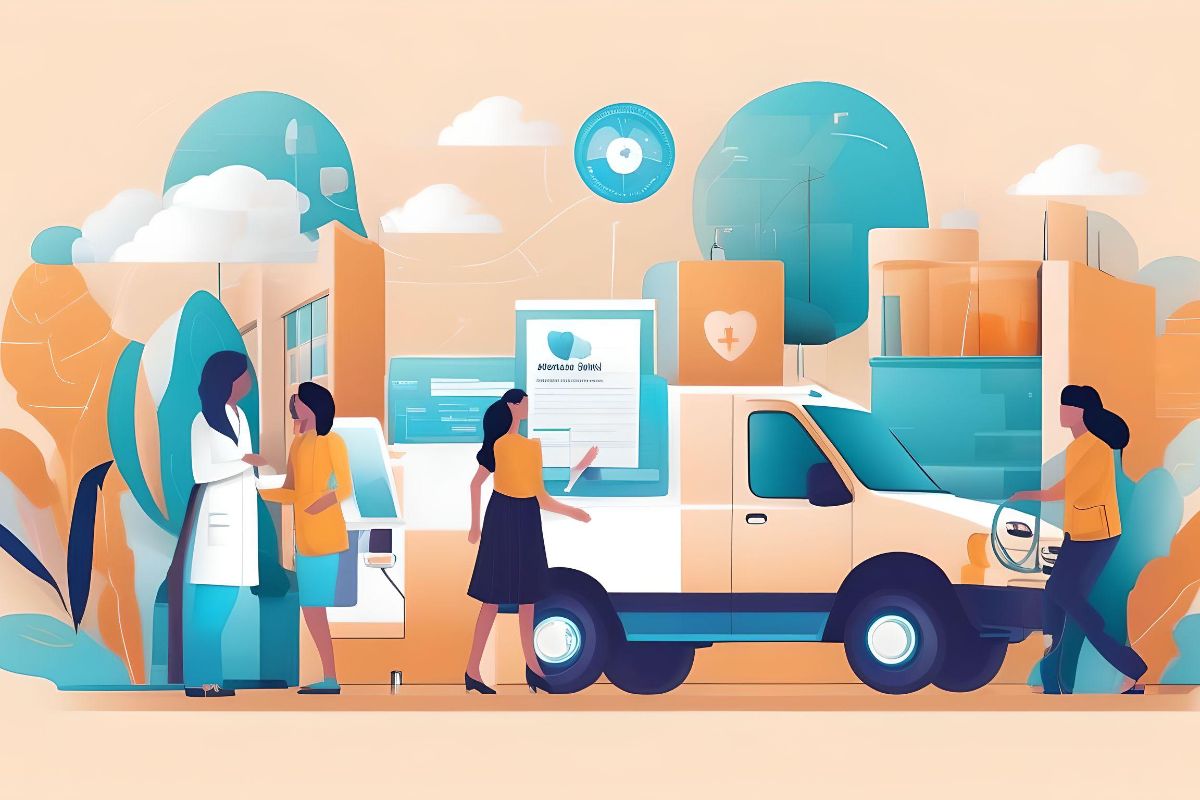Moving oversized loads is a bit of a challenge. We are referring to those really bulky, heavy objects that just cannot fit onto a pallet or in a conventional truck. Now, does that sound familiar? Don’t sweat—you are not alone, and thank your lucky stars, there are some ways to deal with such oversized loads without losing your cool. It all comes down to a few key factors: planning, the right equipment, and smart safety strategies. Large Load Transport Made Much Less Stressful—Here’s How.

First Things First: Know Your Load
Before you even think about moving that giant piece of machinery or stack of lumber, take a moment to assess. Do you know the exact size and weight? It sounds simple, but this is where things can go sideways fast if you’re not paying attention. First, one has to measure accurately, and then further checks need to be carried out on the local regulations. Yes, there are laws governing oversized haulage on public roads. Have you obtained the necessary permits? Okay, now we’re set.
Poor measurement can lead to severe problems, which could range from damage to equipment to delays in delivery. Ever underestimate the weight of an object and get to a point when you wish you hadn’t? It happens. But here, a little more preparation goes a long way. Double-check the weight, and when possible, confirm it with the manufacturer’s specs or a load scale. If you’re off even by a little, you could be begging for failure. Make it a habit to remeasure and reweigh just to make sure.
Choose the Right Gear
Ever tried to lift something way too heavy with the wrong equipment? It is an accident waiting to happen. The same applies to overweight loads. You have to make sure the load matches the appropriate equipment. Forklifts, cranes, trailers—these are some of your standard equipment. But here is the thing: sometimes, you might not be able to get by with just regular tools. This is where using forklift extensions can help you out. Sometimes they will give that extra stretch to your forklift and give you great ease when moving those larger loads. This is like giving it a superpower while compromising absolutely nothing when it comes to safety.
But it is not all about the forklift. Think about the type of terrain you will be working on. Will the surface be even or bumpy? Wet or dry? These factors come into play when you want to know what kind of equipment will be the safest and most efficient. You may need reinforced tires or some sort of specialized attachments depending on the job. And don’t even forget maintenance! Using improperly maintained equipment is asking for an accident. Always check your tools before commencing the work to make sure everything is in good working condition.
Keep It Secure, Keep It Safe
Once you’ve got the right gear, you’re halfway there. But how do you make sure the load stays put? Nobody wants to deal with some giant piece of equipment sliding off during transport. That’s where proper securing techniques come in. Tie it all down using heavy-duty straps, chains, or even netting. Check for solid knots, really—these few minutes taken here will pay off: one stray strap can make a mess. You know, like when you have to pack the trunk of your car before heading off on some road trip? You wouldn’t want all your luggage flying around, would you?
Tension will be your friend for oversized loads. Too little and you’re inviting disaster. Make sure you’re using straps rated for the weight of your load. Are they frayed or showing signs of wear? Toss them. It’s not worth the risk. If you’re not sure how to tie down or properly secure a load, don’t hesitate to ask for help. Sometimes a second set of eyes can catch potential issues before they become huge headaches.
Teamwork Makes the Dream Work
Speaking of chaos, it’s just too easy for things to go awry in the event that your team is not on the same page. Just think about trying to move a huge load with no clear plan or communication in place. It’s just a recipe for disaster. Ensure that all individuals understand their responsibilities, whether it involves giving the signal to lift or guiding the forklift driver through tight spaces. Pro tip: hand signals and radios can be quite handy when you’re dealing with oversized loads. Clear and continuous communication keeps accidents at bay and things running smoothly.
You don’t want anyone second-guessing themselves mid-move. A clear plan ensures that every team member is confident in his or her task. Allow a few minutes prior to the start to run through the plan and ensure all are on board. And remember, the more eyes on the operation, the merrier. Sometimes, a person from outside the immediate area may catch things you don’t. Think of teamwork like an orchestra—each person has a role, and when everyone’s in sync, things run like clockwork.
Getting Out of Tight Spots
Okay, so you’ve got the load secured and the team’s ready to go. Now, what do you do when you reach a narrow hallway or tight corner? That’s when it gets tough. Here’s the rub: It’s all in the planning. Know your path ahead of time. Know that you can get through. Sometimes, with just a little more maneuvering, you won’t get into a bad headache. If you’re using forklift extensions, that extra reach can come in really handy, allowing you to negotiate spaces that might have otherwise seemed impossible.
Take a cue, first, on your own two feet. This gives you a better sense of what sorts of obstacles you might be running into, and how to avoid them. You may well think that a slightly different approach will make things easier. And don’t forget overhead clearances; it is not always the sides of the truck you need to worry about! Slow, methodical movement avoids the ‘last-minute surprises.’ And the more pairs of eyes watching for clearance, the better. One little mistake can cause big problems, so go slow.
Safety First, Always
Safety would be, of course, the most important thing. It’s easy to get wrapped up in the logistics of a move with oversized loads and forget about this, but it’s paramount. Make sure your team knows what to do in case something goes wrong inside and out: that means regular training, routine checks on equipment, and running through safety drills. A minor slip-up in concentration can become a major problem. And realistically: no one wishes to deal with having to work through the aftermath of an accident.
Even your most seasoned workers need a refresher on safety protocols every now and again. Create a regular schedule for training sessions and don’t let those slide. Safety is a process—it’s not some sort of one-and-done type of thing. Use safety checklists as part of your routine. Now, walk through each step before, during, and after the job to catch anything that may have been overlooked. And, finally, when in doubt, stop and reassess. There is no shame in taking some time to figure out the safest way forward.
Wrapping It All Up
There is no need for oversized cargo to be a nightmare; with the right strategy, the right equipment—hello, forklift extensions—and a good plan, even the bulkiest objects can be moved around with as little fuss as possible. Make sure it’s secure, keep communicating with your team, and above all, make sure safety is number one. Now you’re ready to tackle those oversized loads like a pro. Ready to get moving? Let’s do this!
Remember, every job is an education. The more oversized loads you handle, the better at it you’ll become. Don’t be afraid to adjust your approach as you go along—sometimes the best solutions come from experience. If you find something that works well, share it with your team. By collaborating on best practices, you’ll make everyone’s job easier. So, the next time you are faced with some sort of overwhelming oversized load, take a deep breath and remember these tips—you’ve got it!









